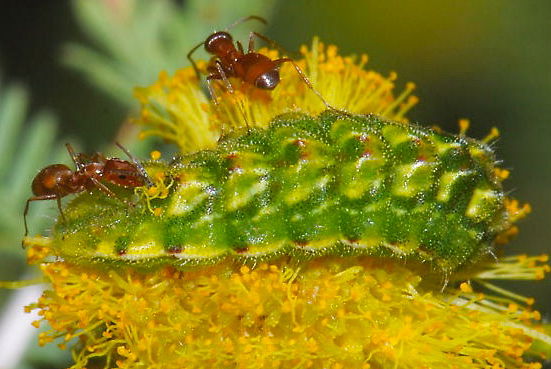When I see the tiny little blue butterflies fluttering around the rosemary plants next to our turtle pond I am reminded of the very unusual relationships that have evolved between some of the Lycaenid butterflies and ants.
The Lycaenid group of butterflies typically has iridescent blue, purple, or copper on the upper wing surfaces, commonly referred to as “blues, coppers and hairstreaks”. What makes them really special is the amazing relationship that the butterfly larvae, or caterpillars, have evolved with ants.
Caterpillars of Lycaenid butterflies feed on leaves, flowers, and seeds of their host plants. They also have specialized glands that make a sweet liquid. The ants are attracted to the glands and feed on these secretions. The ants protect the caterpillars in return for the substance secreted from the caterpillar.
Researchers have found out that queen ants make subtle sounds that signal their special status to worker ants. The caterpillars have learned to mimic those sounds earning high enough status to be rescued before others if the nest is disturbed.
While the ants look after the caterpillars the larvae secrete from glands on their skin, a liquid much like nectar from flowers, and this liquid is irresistible to ants. They lap it up, straight from the surface of the caterpillar. In return, the ants tend the caterpillar to fend off predators. If the caterpillar pupates in the ants’ area it must leave immediately upon emerging or it will be fair game for the ants. Thanks a Lot!
Nature is full of strange relationships - some new ones are discovered every year and perhaps some will never be discovered. Here is a new one to me.
A large beetle spreads its wings to fly revealing a teeny tiny hitchhiker going for a free ride. The pseudoscorpion, spider-like, and often overlooked due to its small (1 cm) size, often disperses by hiding under the wing covers of large beetles. Not only does it get a lift to a new destination, but it also gains protection from predators to boot. The pincers of the pseudoscorpion are too small to affect its beetle host, so the pseudoscorpion gains all the advantage in this relationship.






